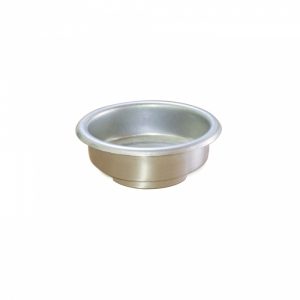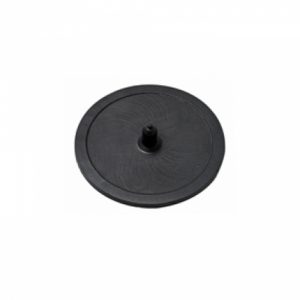Ahşap Saplı Tamper Ceviz 58mm
51 – 58 mm arası ölçüleri bulunmaktadır.
İsteğe göre lazer baskı
(Lazer baskı ücreti: 12 Tl + Kdv)
Ahşap Sap / 304 Paslanmaz Taban
Tamper ile Pres Uygulamak, Temp Etmek
Tamper ile pres uygulamak (temp etmek), öğütülmüş kahvenin kaşığın (portafiltre) içerisinde sıkıştırılarak yüzeyinin düz hale getirilmesidir. Bu espresso alımında ne kadar iyi extraksiyon olacağını doğrudan etkiler. Kahve sıkıştırılıp yüzey düz hale getirilerek suya karşı bir direnç oluşturulur ve suyun kahvenin içerisinden eşit bir şekilde geçmesi sağlanır. Bazı kahve değirmenlerinde kahveyi sıkıştırmak için burun gibi tampera benzeyen bir çıkıntı olmaktadır, buradan alınan sonuçlar tatmin edici değildir çünkü kahveyi aşağıdan yukarı bastırdığınız için öğütücünün taşıyabileceği kadar ağırlık uygulayabilirsiniz aksi halde öğütücü sarsılır ve devrilir. En iyi sonuç tamper ile elde edilir. Tamper, metal yuvarlak bir tabandan ve kullanımı için bir sap kısmından oluşur. Taban çapı, kaşığın (portafiltrenin) çapına eşit olmalıdır.
Tamperı Düz ve Eşit Uygulamak
Öncelikle kaşığa (portafiltre) öğütülmüş kahve doldurulur. Kahvenin kaşığa tam yerleşmesi için kaşık sert bir cismin üzerine birkaç kere vurulur, sonrasında parmakla veya düz bir cisimle taşan kahve fazlası kaşığın üstünden alınır. Kaşık yatay bir şekilde tamper altlığına konulur ve tamper kaşığın üzerine yerleştirilir, hafif bir çevirme işlemi yapıldıktan sonra 15-20 kilogram basınç uygulayarak kahve sıkıştırılır. Tamper ile kahveyi presleme işlemini doğru gerçekleştirmek çalışma ve pratik gerektirmektedir. Doğru basıncı uygulayabilmek için ilk başta bir terazi üzerinde çalışılmalıdır. Sıkıştırma gerçekleştirildikten sonra tamperı çekerken hafif bir çevirme işlemi yapılabilir yüzeyin pürüzsüzlüğünün bozulmaması için. Eğer portafiltrenin etrafında ve sıkıştırılmış kahvenin yüzeyinde kahve tortuları kalmış ise uzaklaştırılmalıdır. Bu fazla kahve tortuları kaşık birkaç kez zemine vurularak ortaya toplanıp çok fazla basınç uygulamadan ikinci bir temp işlemi yapılabilir. Tortuları ortaya toplamak için tamperın yüzeyi veya sap kısmı ile portafiltreye vurulmamalıdır, bu işlem sıkıştırılmış kahvenin yapısını bozacaktır. Temp işleminin sonucu düz bir kahve yüzeyi olmalıdır, su bu sıkıştırılmış kahveden eşit bir şekilde geçerek akabilir. Portafiltre grup başlığına takılmadan kenarları tekrar parmakla temizlenmelidir. Eğer tamper doğru uygulandıysa, espresso yapıldıktan sonra portafiltre ters çevrildiğinde kahve posasının oluşturduğu kahve keki kendiliğinden tek parça olarak düşer, kötü temp işleminde kahve kekinde çatlamalar görülür.
Flat Tamper, Convex Tamper
Kahveye tamper doğru bir şekilde uygulandıysa düzgün bir şekilde sıkışmış ve yüzeyi pürüzsüzdür. Kaşığın (portafiltre) yapısı oval ve eğimli olduğu için tamper ile pres yapıldığında kaşığın duvarlarına yakın kısmındaki kahve, tam olarak sıkışmamış ve bazı bölümlerinde boşluklar kalabilmektedir. Kahvenin tam olarak sıkışmaması da suyun o bölgelerden daha hızlı geçerek akmasına sebep olmaktadır. Convex tamper, portafiltredeki kahvenin kenarlarına yakın bölümlerini de doğru bir şekilde sıkıştırabilmektedir. Flat tamper ile pres uygulandığında kahvenin kenarlardan daha çabuk akması mümkünken convex tamper ile öz daha eşit bir şekilde alınabilmektedir.
Doğru, Kahve Tamper – Click(Dinamometrik)(Kalibrasyonlu) Tamper
Tamper sapı ne kadar ince ve uzun olursa elle kavramak o kadar rahat olur ve el bileği temp işleminde daha düzgün pozisyonda tutulabilir. Tamper sapı ne kadar kısa ve geniş olursa barista o kadar zorluk yaşayacaktır çünkü kavrarken el daha geniş açılır ve sürekli temp işlemi yapılıyorsa bir süre sonra bilekte ağrı oluşacaktır. Tamper modelleri zamanla değişime uğradılar, bazı yeni modeller piyasa çıktı. Bir ismi de Click Tamper olan Dynamometric tamper içerisinde bir yay bulunmaktadır, bu tamper kahve preslenirken az veya çok basınç uygulanmasını engellemektedir.
– English
Laser printing on request
(Laser printing fee: 12 TL + VAT)
Wooden Handle / 304 Stainless Base
Applying, Tempering with Tamper
Pressing (tempering) with tamper is compacting the ground coffee in the spoon (portafiltre) and making the surface flat. This directly affects how well extraction will occur in espresso intake. By squeezing the coffee and making the surface flat, a resistance against water is created and water is provided to pass evenly through the coffee. Some coffee mills have a tamper-like protrusion, such as a nose, to compress the coffee, the results are unsatisfactory because you can apply as much weight as the grinder can carry because you press the coffee from the bottom up, otherwise the grinder will shake and tip over. The best result is achieved with tamper. Tamper consists of a metal round base and a handle for its use. Base diameter should be equal to the diameter of the spoon (portafilter).
Applying Tampon Straight and Even
First of all, ground coffee (portafiltre) is filled with ground coffee. In order for the coffee to settle fully in the spoon, the spoon is hit several times on a hard object, then the excess of coffee overflowing with the finger or a straight object is removed from the spoon. The spoon is placed horizontally on the tamper base and the tamper is placed on the spoon, after a slight turning operation, the coffee is compressed by applying 15-20 kilograms of pressure. Performing correct pressing of coffee with tamper requires work and practice. In order to apply the correct pressure, a scale must first be worked on. A slight twisting operation can be performed while pulling the tamper after the compression is performed, so that the smoothness of the surface is not impaired. If there is any residue of coffee around the porfilter and on the surface of the compressed coffee, it should be removed. These excess coffee residues can be collected by hitting the spoon several times and a second temp operation can be done without applying too much pressure. To collect the deposits, do not hit the portafilter with the surface or handle part of the tamper, this process will disrupt the structure of the compressed coffee. The result of the temp process should be a flat coffee surface, the water can flow through this compressed coffee evenly. The edges of the portafiltre should be cleaned with a finger again without being attached to the head of the group. If the tamper is applied correctly, after the espresso is made, when the portafilter is reversed, the coffee cake formed by the coffee pulp automatically falls off in one piece, and in bad temp operation, the coffee cake cracks.
Flat Tamper, Convex Tamper
If tamper is correctly applied to the coffee, it is properly stuck and its surface is smooth. Since the structure of the spoon (porfilter) is oval and sloped, when pressed with tamper, the coffee near the walls of the spoon is not fully jammed and there may be gaps in some parts. The coffee not being fully compressed also causes the water to flow through those areas faster. Convex tamper can also properly compress portions of the coffee in the porfilter close to the edges. When pressing with flat tamper, it is possible for coffee to flow more quickly from the edges, while the convex tamper can be extracted more evenly.
True, Coffee Tamper – Click (Dynamometric) (Calibrated) Tamper
The thinner and longer the tamper handle, the more comfortable it is to grasp by hand and the wrist can be held in a smoother position in the temp operation. The shorter and wider the tamper stalk, the harder the barista will experience because the hand opens wider when gripping and if the temp operation is done continuously, pain will occur in the wrist after a while. Tamper models have changed over time, some new models have been released. Dynamometric tamper, also called Click Tamper, has a spring in it, which prevents the pressure to be applied more or less when pressing the coffee.
It has dimensions between 51 – 58 mm.





İncelemeler
Henüz inceleme yapılmadı.